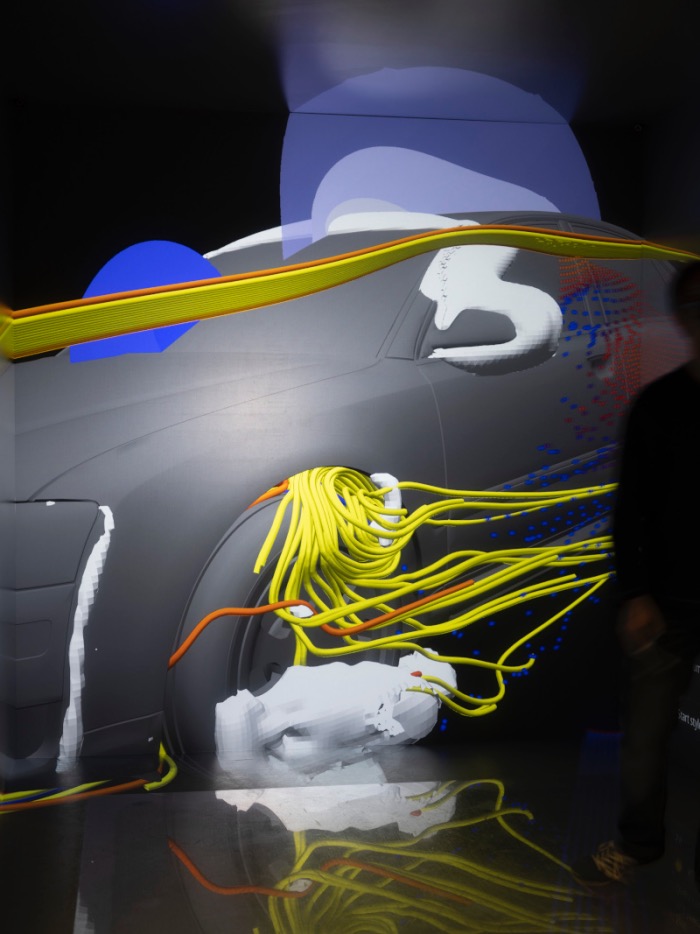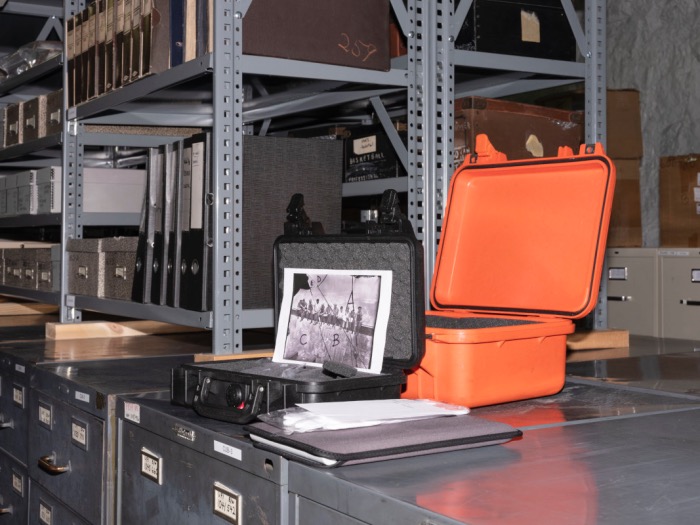
Fotografo sconosciuto, pubblicità della Recordak con etichetta “Tutti questi assegni in 30 metri di rullino. Un bel risparmio”, 1955 c. Università di Rochester, Libri Rari, Collezioni Speciali e Conservazione (RBSCP), Kodak Historical Collection / Photographer unknown, photo for a Recordak ad, labelled “All those checks in a 100-foot roll. That’s economy”, ca. 1955. University of Rochester, Rare Books.
PHOTOGRAPHY AS INFORMATION TECHNOLOGY
How many photographs have you taken with your smartphone in the last seven days? How many images have you received and left stored on your phone?
Photography is an integral part of our lives.
From its inception to the present day, it has had the ability to insert itself into every area of society, from science to art, from politics to information, from industry to the personal lives of each of us.
An exhibition in Bologna tells a different story of photography, one that goes beyond the fact that photography is an art, but considers this tool in its countless practical uses and communicative power.
Photography as information technology

Armin Linke, Università di Stoccarda, High-Performance Computing Center (HLRS), Stoccarda, Germania, 2019. Courtesy: l’artista e Vistamare. Milano/Pescara / Armin Linke, University of Stuttgart, High-Performance Computing Center (HLRS)
Photography is a system for the creation, processing, archiving, protection and exchange of visual information within different types of production processes, particularly in science, culture and industry.
The push towards the use of photography as an information technology occurred
around the middle of the last century, when the management and administrative processes of companies and institutions were expanding and needed to be optimised.
Long before today’s information society, organisations based on the
capitalist model depended heavily on systems of communication and
access to information, which thanks to photography have improved exponentially
to the point of enabling the development of global industries and vast governmental apparatuses.
Then came digital photography, which performed the tasks described so far in an increasingly increasingly efficient, causing a real leap in scale.
With the exhibition IMAGE CAPITAL. Photography as Information Technology, photographer Armin Linke and photography historian Estelle Blaschke, a researcher at the University of Basel, explore through images, texts and other materials the different ways in which photography is used within different types of production processes, particularly in science, culture and industry: thanks to photography, in fact, communication systems and access to information have improved exponentially to the point of enabling the development of global industries and vast governmental apparatuses.
With digital photography there has been a real leap in scale.
“Instead of being merely the subjects of photographs,” said Zanot, “the objects of our world are now constructed on the basis of the photographs themselves and their reworkings, reversing a previously unidirectional relationship. These transformations bring with them some fundamental economic and political repercussions: the great masses of images that feed this system have acquired a very high value, conferring on those who have taken them a very high value.
very high, giving those who possess and manage them equally exterminated powers. In capitalist society, photography does not only dominate the imaginary, but much more”.
THE SECTIONS OF THE IMAGE CAPITAL EXHIBITION
The exhibition in Bologna explores these processes in a journey from the beginning of their history to the most recent and up-to-date technologies.
The exhibition is divided into six sections:
Memory: on the capacity of photographs to collect and store information.
Beginning with the idea of mechanical reproducibility, the intrinsic nature of photography as a recording tool is investigated here, the potential of which is being expressed at an increasingly high level with the advent of digital technology.
Access: on how images are stored, retrieved and indexed.
The association between photography and text (or metadata) is the basis for the success of this medium as an information technology. Metadata (keywords, geodata, captions…) are not only useful for organising images in ordered systems, but also for finding and using them.
Protection: on strategies for the long-term preservation of images and the information they contain. If images can be considered as repositories of potentially perishable information, they in turn must
be protected in order not to be dispersed. Here, strategies for protecting images are investigated, from archives, which can reach monumental dimensions, to back-up systems.
Mining: on the analysis of images and their use in automatic recognition technologies. While it is true that photographs contain a great deal of information, systems are likewise required to extract it (mining). This section is dedicated to these processes and the consequent possibility of using large
quantities (clusters) of similar images (from which similar information is extracted) for the development of automatic recognition technologies, the applications of which are crucial today, particularly in the industrial and security sectors.
Imaging: on photography as a system for visualising reality or a project thereof.
Photography is observed here as a visualisation system, from its ability to go beyond the limits of the human eye to its use in the development of rendering and digital modelling techniques. After having long been considered a proof of reality, photography in this sense constitutes the starting point from which reality is designed and constructed.
Currency: on the value of images. From the association between photography and currency to information capitalism, here we look at the processes of attributing value to images, which today are particularly linked to the ability to accumulate large quantities of them and, above all, to associate large sets of information with each one.

Armin Linke, Sito di stoccaggio di Iron Mountain, Boyers (PA), USA, 2018. Courtesy: l’artista e Vistamare Milano/Pescara / Armin Linke, Iron Mountain preservation facility, Boyers (PA),
INFORMATION ON THE IMAGE CAPITAL EXHIBITION
IMAGE CAPITAL
Photography as information technology
MAST. Bologna
22 September 2022 – 8 January 2023
Starting with texts by Estelle Blaschke and photographic works by Armin Linke, creators of the IMAGE CAPITAL project, the exhibition includes a wide selection of interviews, videos, archive images, publications and other original objects.
Despite their diversity, all these materials are arranged in the MAST exhibition spaces on the same level, without hierarchies or priorities, with the aim of offering viewers a narrative-experience that is as immersive as it is layered.

